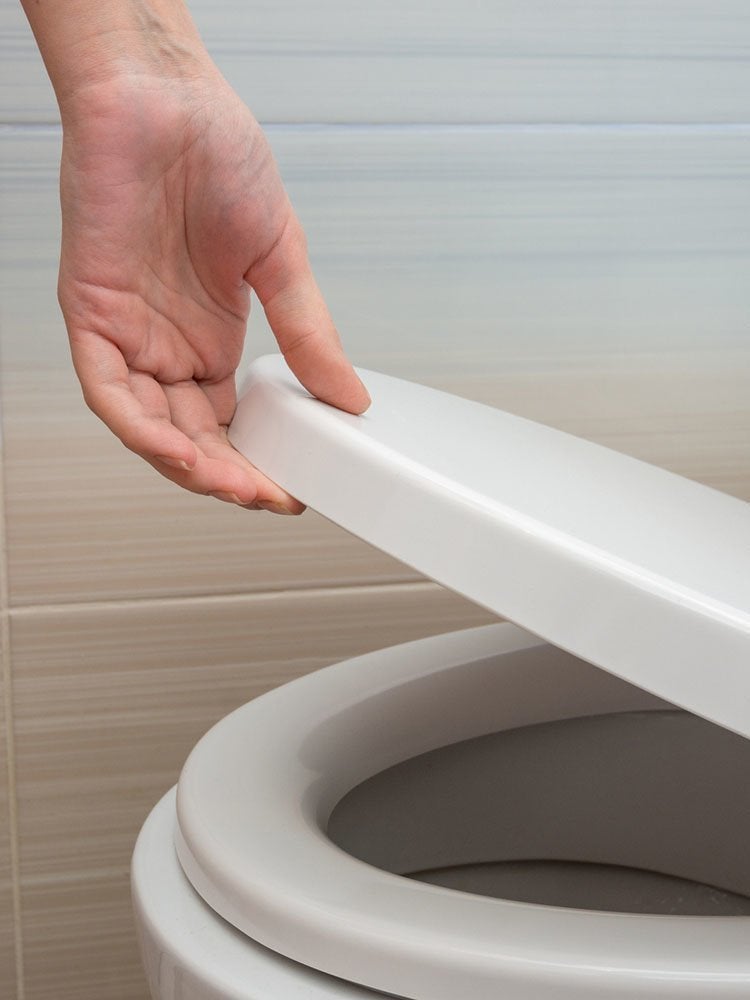We may earn revenue from the products available on this page and participate in affiliate programs. Learn More ›
Keep It Safe

While bathroom safety is especially important for the elderly, injuries can happen to anyone. Each year, 43,000 children are taken to the emergency room after slips and falls, hot-water scalds, and other bathroom accidents. Here are the best ideas for boosting safety and increasing functionality in the bathroom. After all, we spend up to an hour each day in there, so we should make the room as safe as possible.
Minimize Slips and Falls

Commonsense precautions can have a big impact on bathroom safety. Cushion all sharp edges with adhesive guards to minimize injuries from slips and falls. Keep essential items within easy reach by using a shower or bath caddy so bathers don’t have to reach too far or step out of the tub to get what they need. And be sure to clean regularly! Mold and mildew make surfaces slippery and can lead to health risks too.
Control Water Temperature

Prevent burns from scalding water by setting the thermostat on your water heater to 120 degrees F or lower. You can also purchase child-friendly solutions, such as heat-sensitive toys that help ensure safe bath temps.
Get Some Traction

Slick, wet bathroom floors can easily lead to dangerous slips and falls. Make sure all shower mats have a rubberized, slip-proof back, and place cushioned rubber mats inside the shower and bathtub. If you are in the market for new bathroom flooring, opt for smaller stone or ceramic tiles with grout lines to provide more traction.
Install Grab Bars

Falls are the leading cause of traumatic brain and hip injuries for older adults, with more than 2.8 million people hospitalized each year. Installing slip-resistant grab bars in the shower/bath area is a nonnegotiable safety measure. Choose bars that are bolted to the wall, ideally to a stud, rather than models that use suction cups.
Step Up, Securely

Kids are inventive, and if they can’t reach something, they may improvise by standing on a wobbly bucket or stool. Prevent tumbles by making sure all bathrooms are equipped with sturdy step stools, so that people of all ages can reach with safety.
Bathe with Ease

Walk-in tubs are equipped with a door that reaches close to floor level; bathers can easily step into the tub over the low threshold. Another option for creating an accessible bathroom is a curbless shower, which has no raised threshold at all. If a curbless design appeals to you, consult with a skilled contractor, because water can escape if the floor is not properly angled. Installation can run between $2,500 and $10,000.
Take a Seat

If a new bathtub isn’t in your future, consider adding a shower or bath seat to your existing setup. Though they’re often associated with medical facilities or eldercare, safety seats are also available in stylish designs. Double-check weight-bearing capacity, and find a model that fits your lifestyle, space restrictions, and bathroom aesthetics.
Stop Straining

Toilet injuries are surprisingly common and account for 14 percent of all bathroom-related injuries. A raised toilet seat, which elevates the seat by three to four inches, can prevent strain on joints and back. For additional stability, install safety rails on either side of the seat.
Keep It Bright

Avoid stumbles and bruises in the dark by investing in inexpensive LED nightlights to keep bathrooms well-lit at all times. Bright bathroom lighting also encourages cleanliness, so replace dim bulbs with bright white compact fluorescents (CFLs) or LEDs.
Stay Connected

Slips, trips, and other accidents can happen even in the best of bathrooms. Make sure your loved ones can get the help they need immediately by installing a bathroom phone or, if you’re especially concerned, purchasing a medical alert system.

Everything You Need for a Lush and Healthy Lawn
Keeping your grass green and your plants thriving doesn’t just take a green thumb—it starts with the right tools and supplies.
